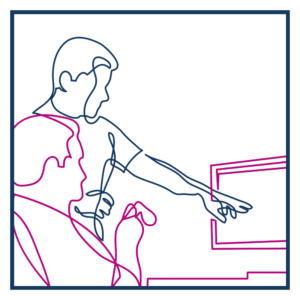There are two steps to improving people’s experience at work. First, take a look at their experience in the organisation and find out what needs to be improved. Second, do the improving.
Seems simple enough. But it’s very hard to judge an employee’s experience – especially when you only look at it from your own perspective.
So here are some of the common mistakes made – and the way to get out of them.
You expect people to act and think like managers
Everything about your own experience is shaped by your position and psychology.
And once you’re a manager or leader, it’s very hard to go back in time and think like a more junior employee.
So when you’re wondering what it’s like for your people to come to work, you might be imagining yourself doing what they’re doing.
Rather than thinking about them doing what they’re doing.
What’s the solution? You need to get into their heads and empathise, thinking about how they experience work.
Another tip: ask them. After all, if you want to get under the skin of the employee experience, just ask the people who are really experiencing it.
You think there is just one shared employee experience across the entire workforce
In most organisations there are employees doing very different jobs. There are also many layers of hierarchy – even in supposedly horizontal organisations.
So you have to deal with many different employee experiences, such as the ‘warehouse experience,’ the ‘front-of-house experience’ or the ‘call centre experience.’
Think how many experiences there are in your organisation.
Each of these experiences is also shaped by other local factors, like managerial quality – which can vary widely, as well all know.
The lesson here is clear: employee experience cannot be judged from above. It must be judged – and improved – at the local level.
You judge the employee experience on one dimension
And that’s often the one that you value the most about employment.
But there are many dimensions to your people’s experience at work that you can consider if you’re stuck in a rut.
For example, ‘task-based employee experience.’ What’s your experience of work tasks? Are they demeaning or empowering?
There’s also ‘relationship-based employee experience.’ Do you have good relationships at work? Are they meaningful?
What about ‘fulfilment-based employee experience?’ This means how you promote self-actualisation, pride and purpose in the workplace.
Don’t forget ‘values-based employee experience.’ Because the organisation’s values and mission statement need to gel with your own.
Which experience do you value the most? That’s the one you’ll naturally think about when judging employee experience.
But they’re all important and you can’t truly judge employee experience without considering them all.
You don’t build a pyramid from the top
Managers tend to start too high up Maslow’s hierarchy of needs when judging employee experience, looking to things like purpose and self-actualisation.
Why? It’s easier to budget for, it’s more cost-effective across an entire workforce and it’s easier to cut out if times get tough.
But that doesn’t mean you should go back to basics and start looking for fuel, a cave and a mammoth to hunt.
Instead, look at things like pay, working hours and psychological safety, which are the foundations of the pyramid.
It’s harder for leaders, who will be paid better and have more social and political power in an organisation, to get under the skin of things like psychological safety and fair pay.
This can be a particular issue for organisations (like charities, or not-for-profits) that tend to pay people left of the median but offer an enhanced benefits package or progressive working hours to ‘make up’ for the lower pay.
You think like someone looking for problems and solutions
Instead, why not take a ‘human-centred’ approach to experience? Put the people back into any situation, because at the end of the day it’s people that matter most.
We live in a world where nothing escapes our need to optimise. Diet. Exercise. Our social lives. And in the workplace, this optimisation has become king, because it sorts the winners from the losers.
But what if you stop thinking like a Neanderthal in a mammoth-slaughtering contest, and start thinking what your people actually want.
If you really want to see what your employees see, you need to put aside your ‘fixing’ mindset and experience the workplace in a really human way.
You ignore the impact of personality on employee experience and focus on factors that you can control
Everyone is unique. With every will in the world, a centralised policy can’t take this into account: people are far more complex than a one-size-fits-all policies.
Policies and initiatives are great, they must be flexible enough to work at the local level.
So get your managers talking to your people at every turn. And find the truth of your employee’s experience.
But the best way of enhancing your people’s experience is to elevate the power of their voice. Find out how to give power to your people.







